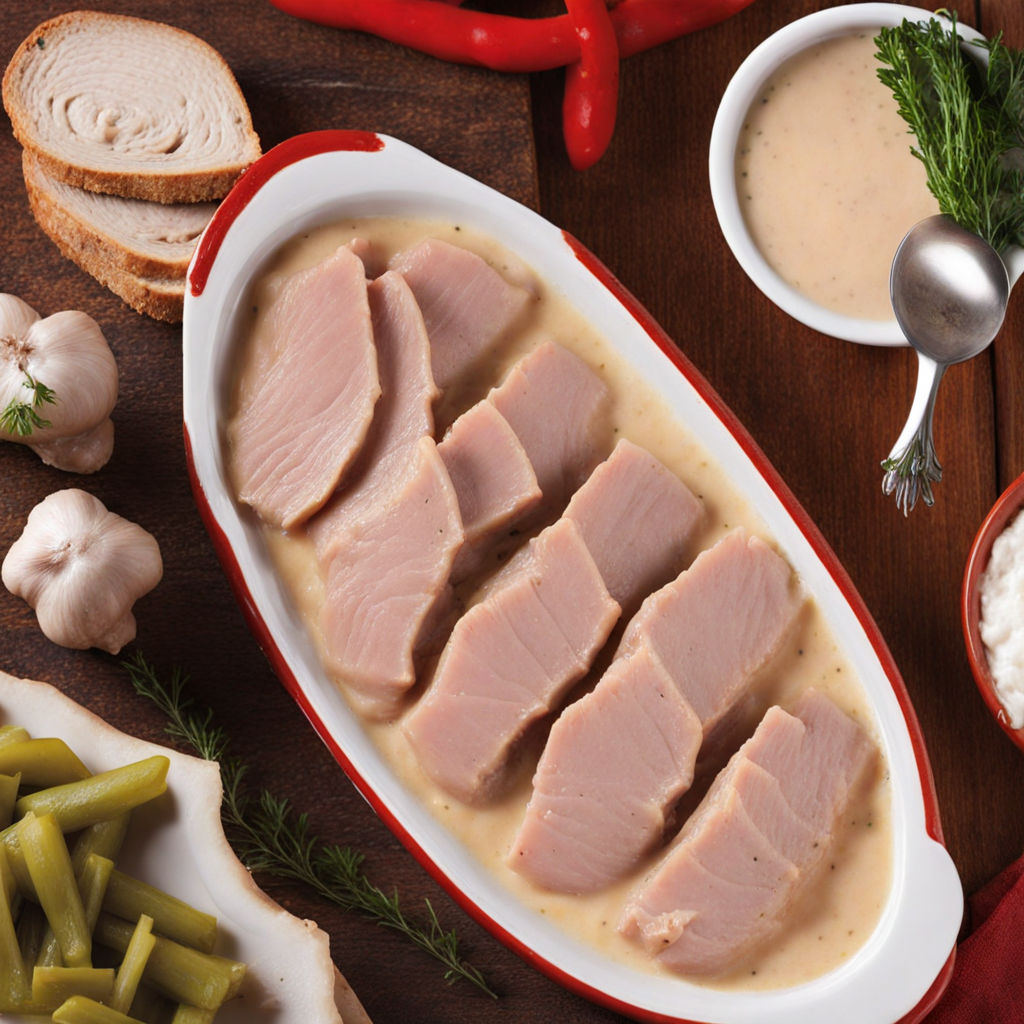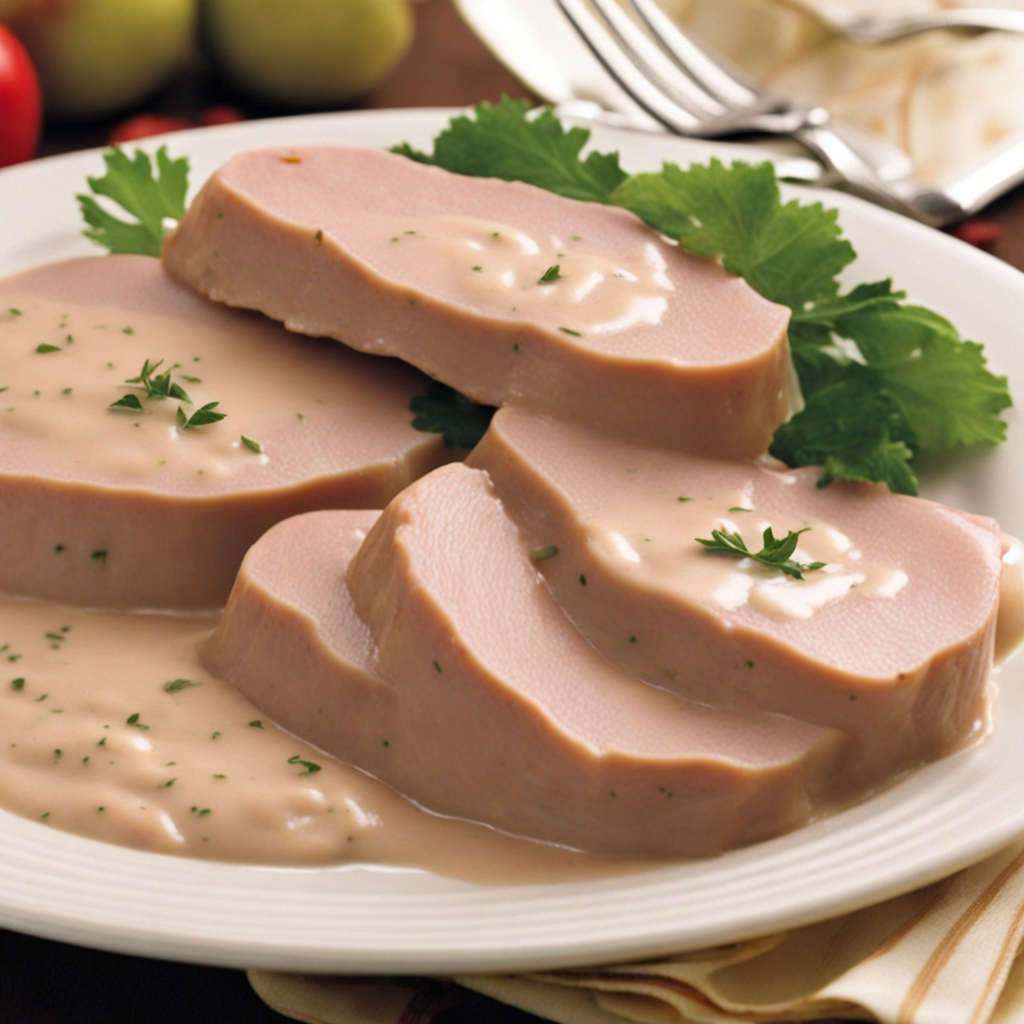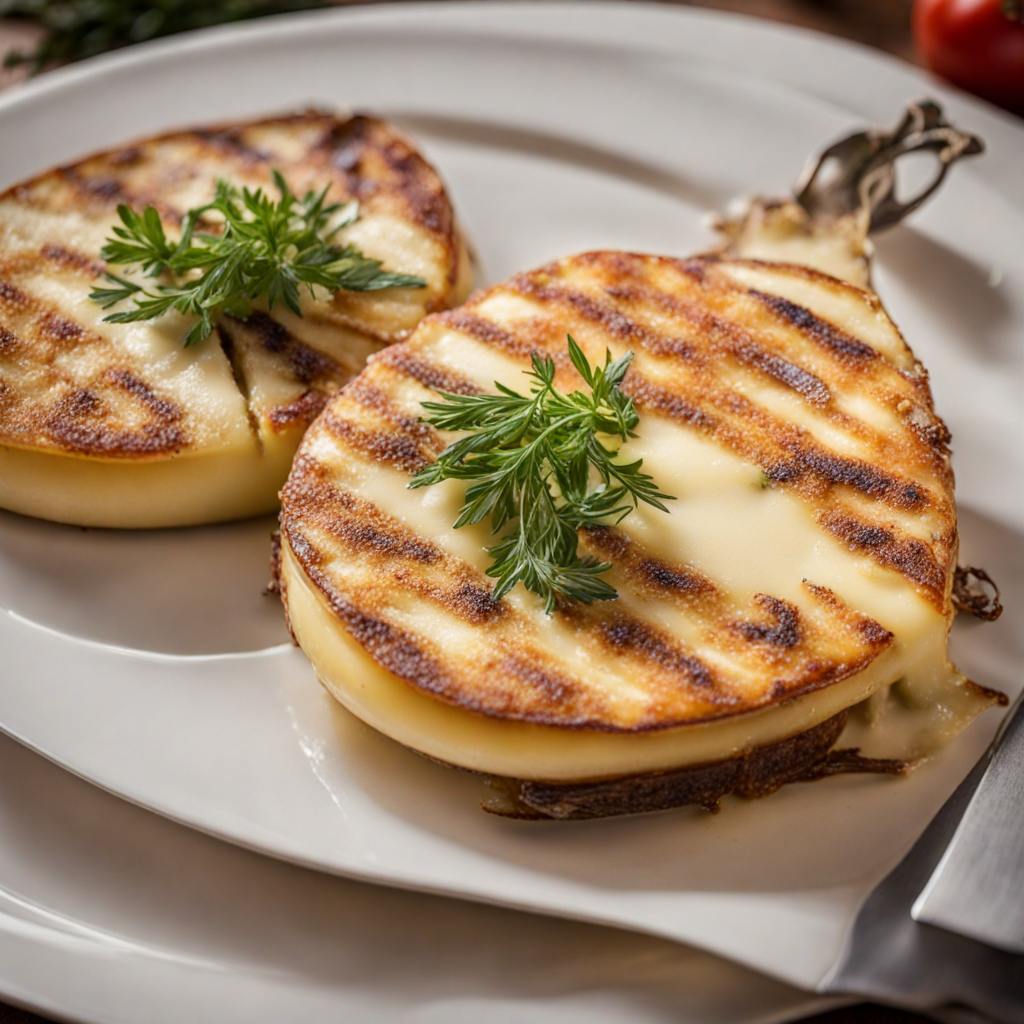Vitel Toné
Vitel Toné is a traditional Argentine dish that beautifully marries the flavors of tender veal and a rich, creamy sauce. The main component, veal, is typically slow-cooked until it reaches a melt-in-your-mouth tenderness. Once cooked, the meat is thinly sliced and arranged elegantly on a platter, making it not just a feast for the palate but also for the eyes. The dish is often served chilled, which adds a refreshing element that is especially delightful during warm gatherings or celebrations. The sauce that accompanies Vitel Toné is what truly elevates the dish. It is a unique blend of ingredients, including tuna, mayonnaise, capers, and lemon juice, creating a creamy texture with a hint of brininess from the tuna and capers. This sauce is generously poured over the sliced veal, infusing it with a savory depth and a subtle umami flavor. The combination of the rich sauce and the tender meat creates a harmonious balance that is both comforting and sophisticated. As you savor Vitel Toné, you'll experience the delightful contrast of flavors and textures. The creaminess of the sauce complements the lean meat, while the acidity from the lemon and the briny notes from the capers add brightness to each bite. This dish is often paired with a crisp salad or served alongside roasted vegetables, making it a versatile choice for any meal. Whether enjoyed at a festive gathering or as a special treat at home, Vitel Toné promises an unforgettable culinary experience that captures the essence of Argentine cuisine.
How It Became This Dish
Origins of Vitel Toné Vitel Toné, a beloved dish in Argentine cuisine, traces its roots back to the culinary traditions of Italy, specifically to the northern regions such as Piedmont. The dish is an adaptation of the classic Italian preparation known as “vitello tonnato,” which consists of thinly sliced veal served cold, topped with a creamy sauce made of tuna, capers, and anchovies. This dish made its way to Argentina in the late 19th and early 20th centuries, when waves of Italian immigrants brought their culinary heritage with them. In Argentina, the dish evolved to suit local tastes and available ingredients. The veal, often sourced from the country's renowned cattle, was complemented by a sauce that retained the essence of its Italian counterpart but adapted to the flavors of the region. Over the years, Vitel Toné became a staple at family gatherings, holiday feasts, and special occasions, symbolizing the fusion of Italian and Argentine culinary traditions. \n\n Cultural Significance Vitel Toné holds a special place in Argentine culture, particularly during festive occasions and the holiday season. It is traditionally served at Christmas and New Year’s celebrations, where it is often featured alongside other family favorites. The dish embodies the spirit of family gatherings, where food acts as a conduit for shared memories and warm connections. The way Vitel Toné is prepared and presented also speaks to the cultural importance of hospitality in Argentine society. The dish is typically served as an appetizer, inviting guests to indulge in the rich flavors and textures before moving on to the main course. Its creamy sauce, rich with umami flavors, provides a delightful contrast to the tender, succulent slices of veal, making it a showstopper on any holiday table. \n\n Ingredients and Preparation The preparation of Vitel Toné involves several key ingredients that contribute to its unique flavor profile. The primary component is veal, which is usually poached or boiled until tender. This cooking method allows the meat to retain its moisture and flavor, creating a succulent dish that is both comforting and refined. The sauce is where the magic happens. A traditional Vitel Toné sauce is made by blending canned tuna, mayonnaise, anchovies, capers, and lemon juice into a smooth, creamy consistency. Some variations include the addition of hard-boiled eggs or mustard for extra richness and depth. The sauce is generously slathered over the cooled veal slices, which are then garnished with additional capers, parsley, or even olives before serving. This layering of flavors and textures illustrates the culinary creativity that has come to define Argentine cooking. The dish is often served cold, allowing the flavors to meld and intensify, making it an ideal make-ahead option for busy holiday celebrations. \n\n Evolution Over Time As Argentine society has evolved, so too has Vitel Toné. Initially celebrated solely for its Italian roots, the dish has gradually become a symbol of Argentine identity, representing the country’s rich multicultural tapestry. The rise of culinary tourism and a burgeoning food scene have led to new interpretations of traditional dishes, including Vitel Toné. Chefs and home cooks alike have begun experimenting with the classic recipe, incorporating local ingredients and contemporary techniques. Some variations feature different cuts of meat, such as pork or chicken, while others play with the sauce, using local herbs or even spicy elements to create a more adventurous flavor profile. These modern interpretations reflect the ongoing dialogue between tradition and innovation within Argentine cuisine. \n\n Vitel Toné in Contemporary Cuisine In recent years, Vitel Toné has seen a resurgence in popularity, particularly in urban centers like Buenos Aires. It is no longer confined to holiday tables; instead, it has found its way into restaurants, food festivals, and gourmet markets. This newfound visibility has encouraged younger generations to appreciate and embrace their culinary heritage. Restaurants have creatively reimagined Vitel Toné, offering upscale versions that highlight artisanal ingredients and contemporary plating styles. These establishments often pay homage to the dish's origins while adding a modern twist, appealing to a diverse clientele eager to explore the flavors of Argentina’s culinary past. Some chefs even experiment with vegan or vegetarian interpretations, substituting the veal with plant-based proteins, thus making the dish accessible to a broader audience. \n\n Conclusion: A Dish Beyond Borders Today, Vitel Toné stands as a testament to the enduring influence of immigration and cultural exchange on Argentine cuisine. It reflects the complex history of the nation, where flavors from around the world have melded to create something uniquely Argentine. The dish continues to evoke nostalgia for many, serving as a reminder of family gatherings and festive celebrations. As Vitel Toné continues to adapt and evolve in contemporary kitchens, its essence remains rooted in the traditions of the past. Whether enjoyed on a holiday table or a trendy restaurant menu, Vitel Toné embodies the spirit of Argentina—a celebration of life, culture, and community through the joy of food.
You may like
Discover local flavors from Argentina







